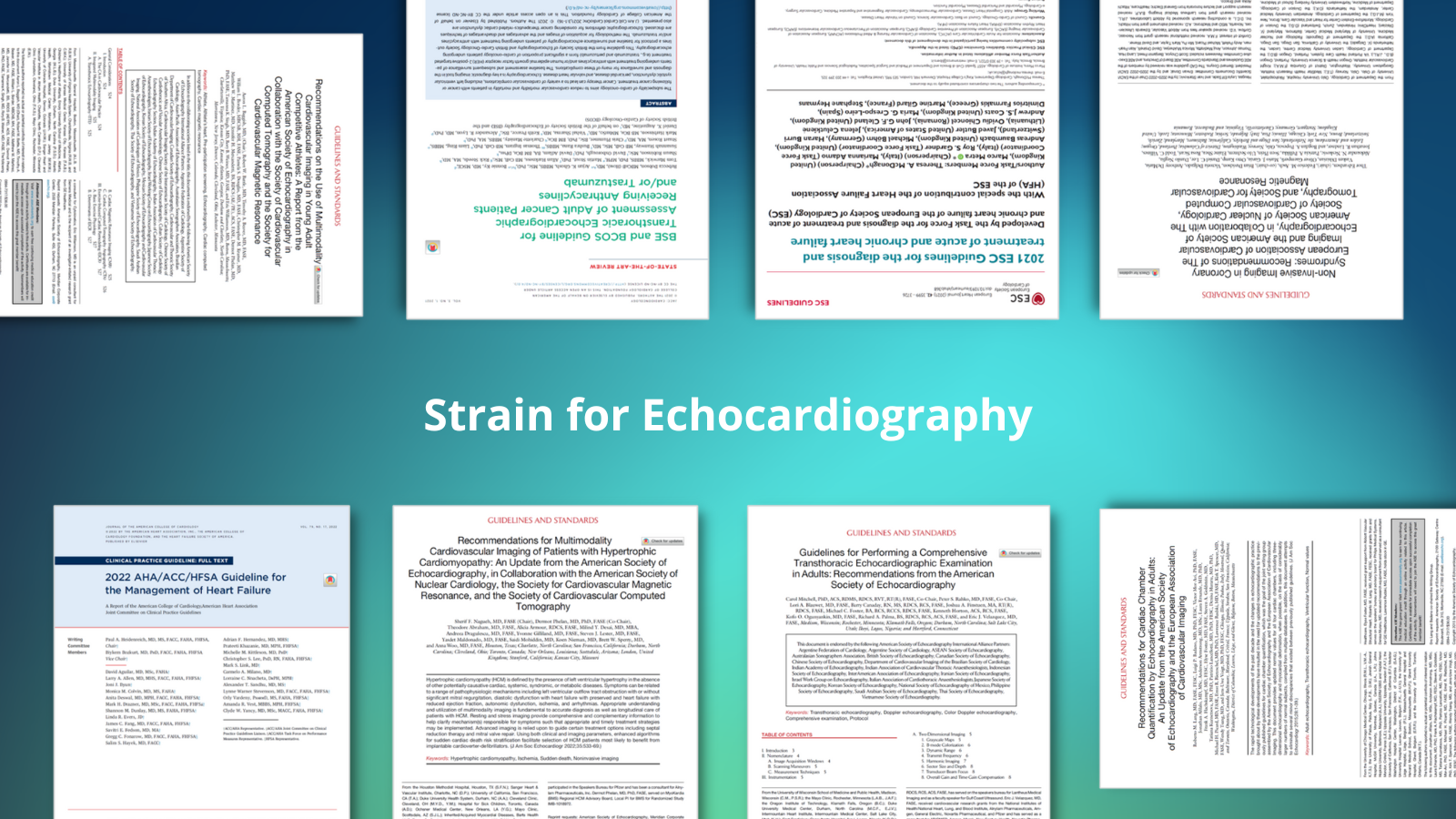
The value of strain in echocardiography: what the guidelines say
- | By Ultromics
- Articles
Myocardial strain echocardiography has emerged as a valuable predictor of heart failure and other adverse cardiac outcomes. Recognized for its value in early disease detection and heightened sensitivity over left ventricular ejection fraction (LVEF), guidelines emphasize the importance of adding strain to regular reporting practices. [1]
With this in mind, we’ve consolidated everything guidelines have suggested for strain into quick summaries that you can reference.
We’ll show you why strain is important, what the most recent guidelines say, and how to easily start implementing strain into your regular reporting practices.
Why Cardiac Strain Matters
Global longitudinal strain (GLS) has been shown to be more sensitive than left ventricular ejection fraction (LVEF) as a measure of systolic function. GLS is increasingly being used to identify subclinical left ventricular dysfunction in a variety of myocardial diseases. [1,2]
This can make diagnosing and risk-assessing cardiac dysfunction in patients with clinical and pre-clinical cardiovascular diseases more accurate than ever before. Improved accuracy leads to earlier diagnoses and management even before visual changes and symptoms occur. [1]
This is why guidelines emphasize the importance of adding GLS to echocardiography, ensuring these measurements can be performed with minimal variability and in a timely manner.
What the Guidelines Are Saying About Strain: An Important Measure of Cardiac Function
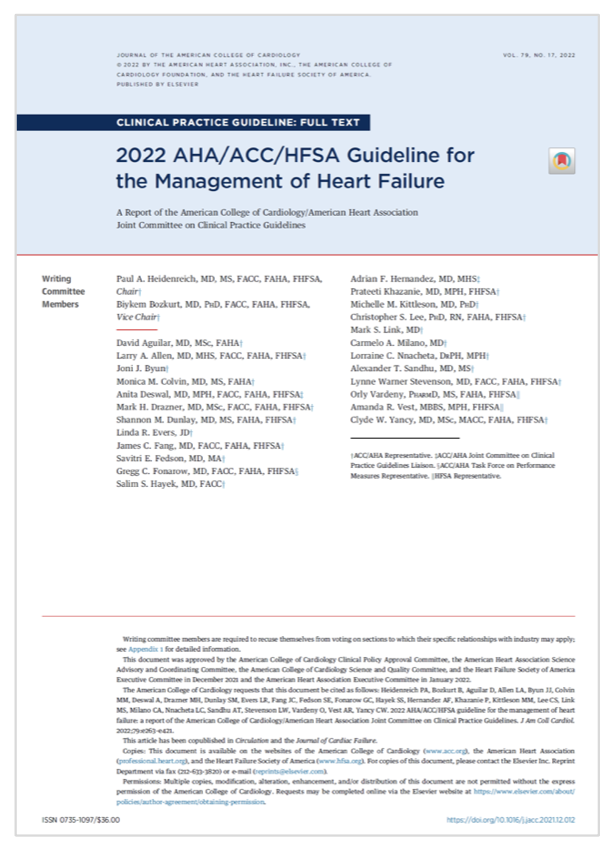 |
2022 AHA/ACC/HFSA Guideline for the management of heart failure GLS is recommended for identifying subclinical left ventricular systolic dysfunction, which has been associated with a higher risk of heart failure and recurrent heart failure hospitalizations.[3] |

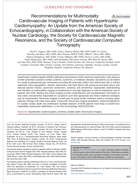 |
2022 ASE/ASNC/SCMR/SCCT Guidelines for multimodality imaging of patients with hypertrophic cardiomyopathy Strain can indicate a range of abnormalities, even in patients with normal wall motion and ejection fraction. It predicts event-free survival in HCM patients with normal ejection fraction, and it’s paramount in patients with increased LV wall thickness. [4] |

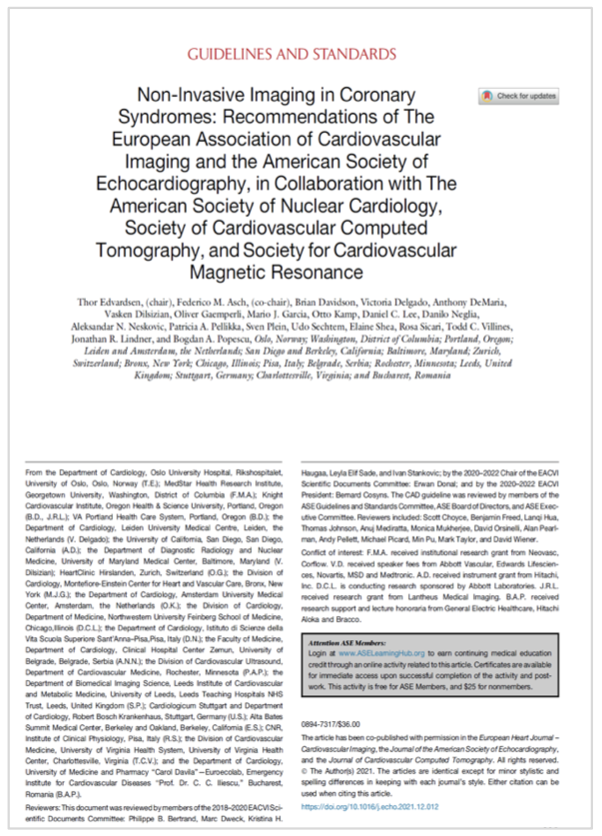 |
2022 EACVI/ASE Guidelines for non-invasive imaging in coronary syndromes These guidelines suggest including LVEF and GLS in routine echocardiograms before hospital discharge, and baseline assessment of resting LV function should be performed in all patients with suspected coronary artery disease. [2] |

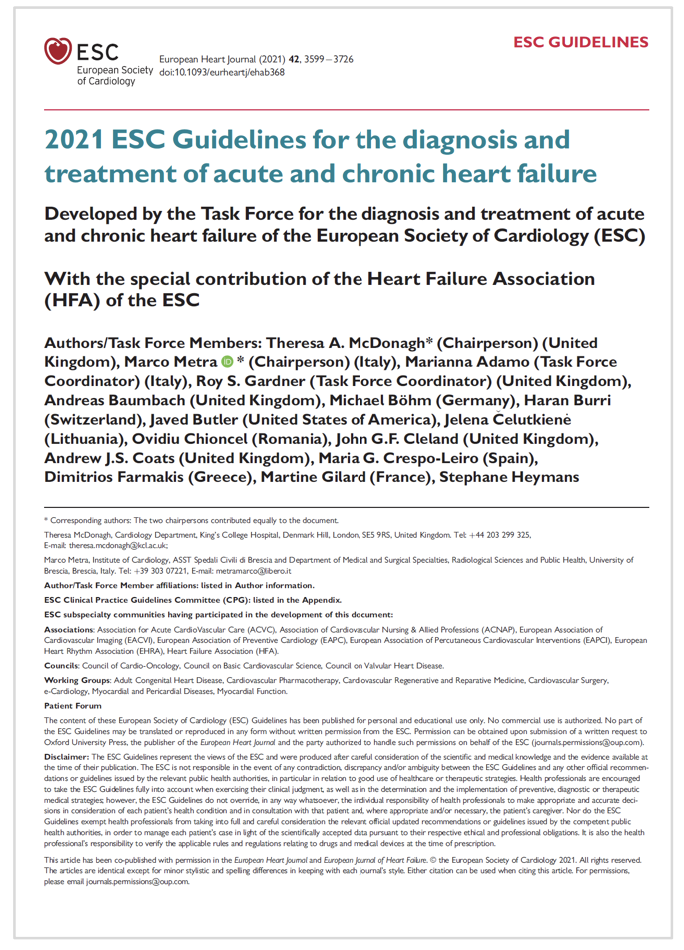 |
2021 ESC Guidelines for the diagnosis and treatment of acute and chronic heart failure GLS can detect cardiac dysfunction at an earlier stage. [5] |

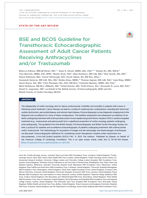 |
2021 BSE and BCOS Guideline for Transthoracic Echocardiographic Assessment of Adult Cancer Patients Receiving Anthracyclines and/or Trastuzumab GLS, LVEF, and volumes are a recommended dataset for a cardio-oncology protocol. GLS is shown to be superior to LVEF in patients receiving trastuzumab and has been suggested that it is more reproducible with appropriate training. [6] |

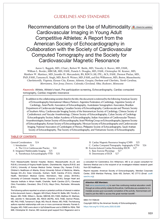 |
2020 ASE/SCCT/SCMR Recommendations on the Use of Multimodality Cardiovascular Imaging in Young Adult Competitive Athletes Strain echocardiography is an important tool to complement routine two-dimensional imaging in the assessment of ventricular morphology among competitive athletes. Left ventricular GLS values higher than -15% should raise consideration of pathology. [7] |

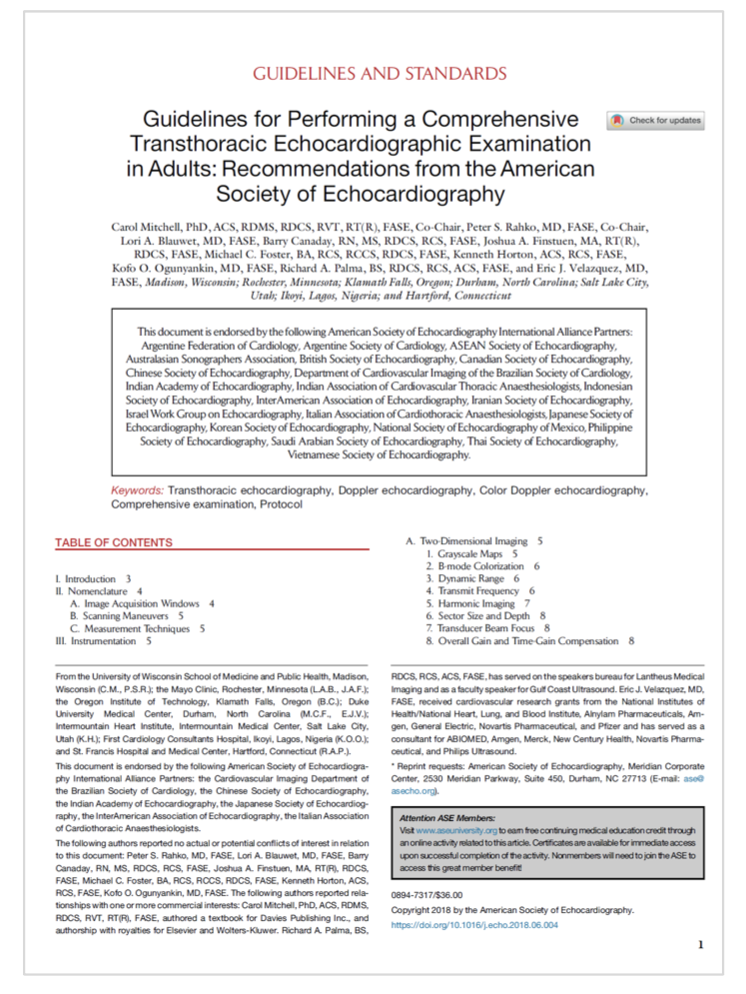 |
2019 ASE Guidelines for Performing a Comprehensive Transthoracic Echocardiographic Examination in Adults GLS is recommended to evaluate ventricular function as part of the standard examination. The most useful clinical data is longitudinal strain derived from apical imaging planes. [8] |

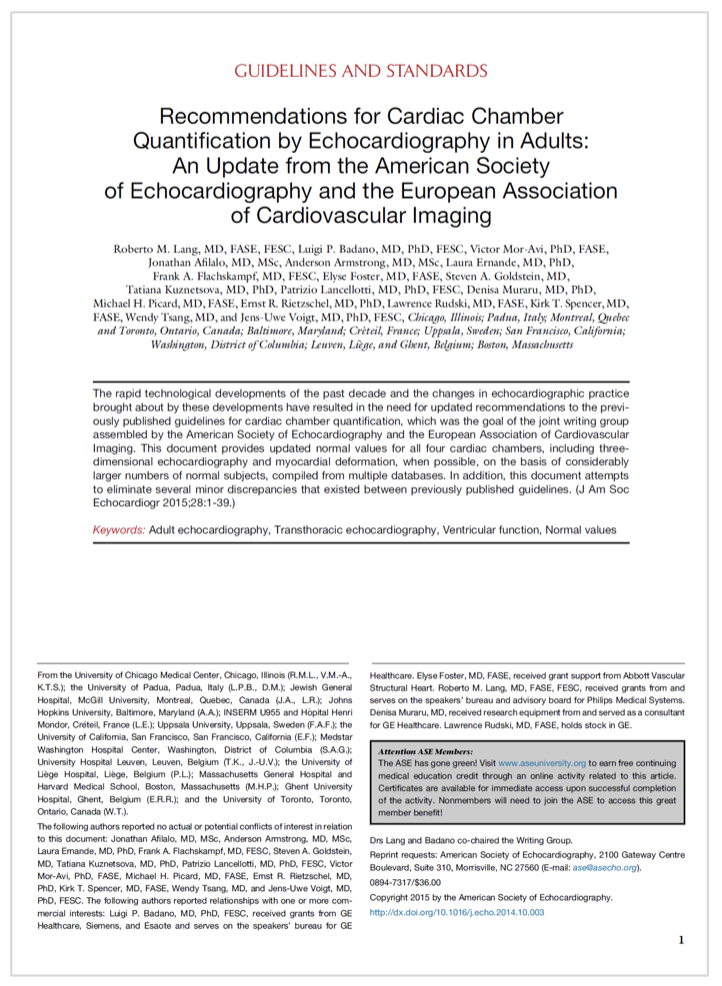 |
2015 ASE/EACVI Recommendations for Cardiac Chamber Quantification by Echocardiography in Adults GLS should be analyzed as part of a routine echo, offering incremental prognostic data over LVEF in a variety of cardiac conditions. [9] |

![2014 ASE/EACVI Expert Consensus for Multimodality Imaging Evaluation of Adult Patients during and after Cancer Therapy[10]](https://www.ultromics.com/hubfs/Screenshot%202022-10-26%20at%2014-49-40-png.png) |
2014 ASE/EACVI Expert Consensus for Multimodality Imaging Evaluation of Adult Patients during and after Cancer Therapy[10] Guidelines suggest GLS as the optimal parameter for early detection of subclinical LV dysfunction. Measurements during chemotherapy should be compared with baseline values where a relative percentage decrease of > 15% is likely to be of clinical significance. GLS assessment is recommended every 3 months. |
A New Standard for Heart Failure Detection
GLS has emerged as an essential indicator of cardiovascular health, but adding this measurement to routine echocardiograms takes extra time and expertise.
This can be a major roadblock for healthcare providers that are already feeling the pressure of increased heart failure patients and a reduced talent pool.
To support the addition of GLS to echocardiography, we need to drastically change the way we measure and assess heart failure risk.
Thankfully, all providers, regardless of their care setting, can now make precise, accurate, and timely diagnoses of heart failure with Ultromics’ AI technology.
The cloud-based platform, EchoGo, offers a simple, secure and seamless way to augment your existing technology and workflow with fully automated, advanced echo analysis including critical advanced measures recommended by guidelines.
References:
- Smiseth OA, Torp H, Opdahl A, Haugaa KH, Urheim S. Myocardial strain imaging: how useful is it in clinical decision making? European Heart Journal. 2015;37:1196–1207.
- Edvardsen T, Asch FM, Davidson B, et al. Non-Invasive Imaging in Coronary Syndromes: Recommendations of The European Association of Cardiovascular Imaging and the American Society of Echocardiography, in Collaboration with The American Society of Nuclear Cardiology, Society of Cardiovascular Computed Tomography, and Society for Cardiovascular Magnetic Resonance. Journal of The American Society of Echocardiography. 2022;35:329-354
- Heidenreich PA, Bozkurt B, Aguilar D, et al. 2022 AHA/ACC/HFSA Guideline for the Management of Heart Failure: A Report of the American College of Cardiology/American Heart Association Joint Committee on Clinical Practice Guidelines. Journal of the American College of Cardiology. 2022;79:263-421
- Nagueh SF, Phelan D, Abraham T, Armour A, Desai MY, Dragulescu A, et al. Recommendations for Multimodality Cardiovascular Imaging of Patients with Hypertrophic Cardiomyopathy: An Update from the American Society of Echocardiography, in Collaboration with the American Society of Nuclear Cardiology, the Society for Cardiovascular Magnetic Resonance, and the Society of Cardiovascular Computed Tomography. Journal of the American Society of Echocardiography. 2022;35:533–69.
- McDonagh TA, Metra M, Adamo M, et al. 2021 ESC Guidelines for the Diagnosis and Treatment of Acute and Chronic Heart Failure. European Heart Journal. 2021;42:3599–726.
- Dobson R, Ghosh AK, Ky B, et al. BSE and BCOS Guideline for Transthoracic Echocardiographic Assessment of Adult Cancer Patients Receiving Anthracyclines and/or Trastuzumab. JACC: CardioOncology. 2021;3:1–16.
- Baggash AI, et al. J Am Soc Echocardiogr. 2020;33:523-549
- Mitchell C, Rahko PS, Blauwet LA, et al. Guidelines for Performing a Comprehensive Transthoracic Echocardiographic Examination in Adults: Recommendations from the American Society of Echocardiography. Journal of the American Society of Echocardiography. 2019;32:1–64.
- Lang RM, Badano LP, Mor-Avi V, et al. Recommendations for Cardiac Chamber Quantification by Echocardiography in Adults: An Update from the American Society of Echocardiography and the European Association of Cardiovascular Imaging. Journal of the American Society of Echocardiography. 2015;28:1-39.e14.
- Plana JC, Galderisi M, Barac A, et al. Expert Consensus for Multimodality Imaging Evaluation of Adult Patients during and after Cancer Therapy: A Report from the American Society of Echocardiography and the European Association of Cardiovascular Imaging. Journal of the American Society of Echocardiography. 2014;27:911–39
Curious about upcoming research and innovation?
Sign up to hear about the latest news.


.jpg)

